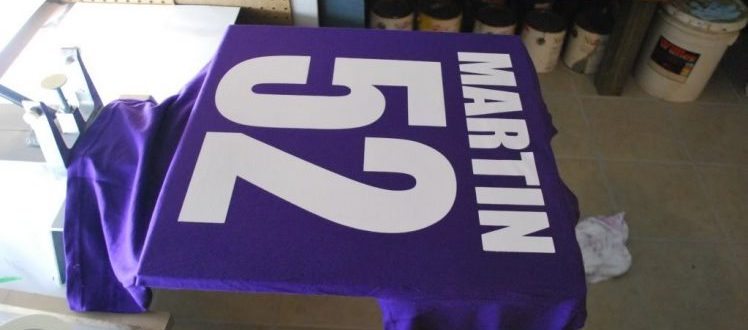Is polyester fabric the required cloth for printing t-shirts through dye sublimation?
Question: For T-shirts, is it mandatory to use polyester T-shirts/fabric with dye sublimation printing?
There has been a lot of experimentation with various natural fibers and mixed natural fibers (like the 50/50 cotton tee), and for the most part, it is best, when using true dye sublimation printing on fabric, to use polyester fabrics.
Some have reported success with the 50/50 cotton tees, but most prefer to use available digital printers that have the proper inks for adhering to cotton, or screen-print inks which are also formulated for cotton or 50/50 t-shirts.
It is important to understand how dye sublimation printing works to be able to justify the above statements, though.
How Dye Sublimation Works
The sublimation printing process consists of a dye ink that is commonly notated as a CMYO ink (cyan-magenta-yellow-overprint) as opposed to standard inkjet printing ink which is the standard CMYK (cyan-magenta-yellow-black). The dye is printed to a paper, commonly known as sublimation transfer paper or dye sublimation transfer paper, then transferred via heat and pressure to mugs, coasters, mouse pads, polyester fabrics that are used in clothing and advertising displays and banners, and many other items.
 Because of the chemistry involved with these dyes, with heat and pressure transforming the dye to a gas, it actually becomes part of the substrate which it is fused to. The heat not only transforms the dye to a gas, it also expands the pores of polyester or polymers (such as the polymeric coatings on various substrates or materials) and allows the gas to be drawn into the pores.
Because of the chemistry involved with these dyes, with heat and pressure transforming the dye to a gas, it actually becomes part of the substrate which it is fused to. The heat not only transforms the dye to a gas, it also expands the pores of polyester or polymers (such as the polymeric coatings on various substrates or materials) and allows the gas to be drawn into the pores.
Once the substrate cools again, the pores close and allow the dye to become solid, permanently embedded in the fabric or polymeric material. This dye also is fade resistant and likely to last for many, many years.
Because the pores of the substrate need to hold the dye when the pores close, other fabrics or substrates will not hold the dye. Hence, if you were to print a 100% cotton t-shirt using the dye sublimation printing process, the cotton would not have the chemistry needed for the pores to close solidly around the dye to be able to hold on to the material or substrate.
Even items like coffee mugs need to be pre-treated with a polymeric coating or the dye sub print will not work. Note that sublimation also doesn’t work on dark substrates, and that white or a slightly off-white material will always work best.
Heat Transfer Printing for Cotton Fabric
There is a type of heat transfer printing that will work well with cotton or natural fibers that will actually chemically cross-link the ink with cotton. This method, which I cannot name due to constraints with some of the sites I post my articles on, gives cotton the soft feel of a dye sub print, vibrant colors and superior wash-ability, similar also to actual dye sublimation printing on polyester fabrics. The resulting print using this process is the most attractive printing on cotton t-shirts available on the market today.
Compared to screen-printing inks which also can be used on cotton t-shirts, this heat transfer dye does not sit on top of the fibers like screen printed ink does, and is especially useful where a photo or full color image is desired. And, unlike screen printed inks, heat sublimation printing on cotton tees leaves a breathable fabric, not plugged up with ink particles that are glued to the cotton fiber. And the fiber stays soft as well.
See wholesale dye sublimation printing on polyester fabrics, check here.
Popular Posts:




